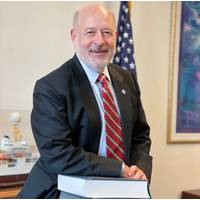
Richard W. Spinrad, Ph.D.: MTR's 2021 #1 Ocean Influencer
, and the reinsurance and insurance industries. So we can make possible this new blue economy because of the advances we’ve made in ocean observations and ocean prediction.We’ve already touched on many of the technology points, but in your career to date, what do you count as the number-one technology evolution that has helped oceanographers to do their business more safely and efficiently?I would have to say, coarsely defined, miniaturization. In terms of platforms, for example, I worked for Navy for many years in my career, and I remember one of the original autonomous underwater vehicles

VIDEO Interview: Steve Hall, Chief Executive, Society for Underwater Technology
it is a challenge for society as a whole to encourage people to understand that there is one planet, one ocean, that we’re all interconnected. And that ocean that used to divide us all is actually the thing now which unites us.When you use your career as bookends, what do you consider to be the one technology that has most made the business of working under water efficient?I would say marine autonomous systems in recent years. That’s the thing which has certainly transformed the cost base. If you want to get data (from the ocean or under polar caps) relying on ships is doable, but expensive
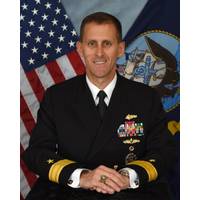
INTERVIEW: RDML John Okon, Commander, Naval Meteorology and Oceanography Command
.The force multiplication effect of having a network of UxS systems (air, surface and subsurface) in theater, providing relevant operationally important environmental data in advance of manned platforms allowing for a clear picture for the warfighter.In your career, what do you count as the number one technology evolution that has helped oceanographers to do their jobs more safely, more efficiently. Technology is important and it seems like many folks are chasing the next best thing.In my opinion, it is the commitment from every aspect of our country, from government, to academia to industry, to
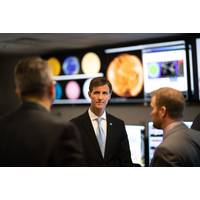
Interview: RDML Gallaudet Steers NOAA’s Path Toward Uncrewed Maritime Systems
column and the temperature near the surface, because that is a critical parameter to better forecast hurricane intensification. With these systems we are better able to predict, to save lives and property. All of this was done under COVID protocols.In your career, what do you count as the number one technology evolution that has helped oceanographers to do their business more safely and efficiently.I think technology is important, applying it smartly, but what I’ve found is the importance of culture. Big government agencies tend to move slow, (because) to be good stewards of taxpayer dollars
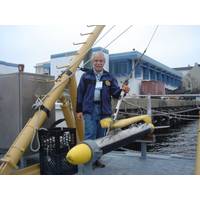
Klein's Side Scan Sonar, Then and Now
in the use of combination of computers and navigation with the side scan. There has also been a lot of work on the image processing. You improve the sonar data to expand and enhance the data, and also make the equipment easier to operate. Outside of your own technology, what one technology do you believe has had the greatest impact on allowing humans to study the oceans? MK: Whoa. It’s such a broad subject and I was involved with so many, and I feel proud that my own devices helped to open up the world of the ocean. We use the term ‘Make the Ocean Transparent
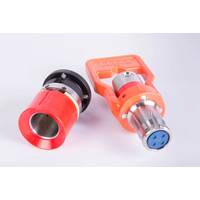
TE Debuts New Wet-mate Connector
for Ethernet protocols, including CAN bus compatibility. “The HydraElectric connector complements TE’s full product offering for the subsea oil and gas market, enabling TE customers to buy a complete solution for fiber optic, power and electrical distribution all from one technology partner,” said Bjørn Hallvard Lund, product manager of global Aerospace, Defense & Marine at TE Connectivity. TE’s HydraElectric connector design features industry standard panel, bulkhead and stab plate interfaces allowing users to exchange, upgrade or modify
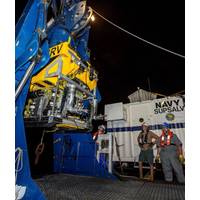
SUPSALV & Finding El Faro
; become a self-learning organization; establish better diving mishap reporting and trend analysis; and update the Navy’s diving program instruction. Marine Salvage is an intriguing business, literally an engineered solution as no two wrecks are the same. In your career, what one technology do you count as having the greatest impact on allowing salvage to be conducted more efficiently and safely? Unequivocally, it’s the improvements in the area of information technology that have had the greatest impact in our response capability. In most cases the physical rigors of salvage
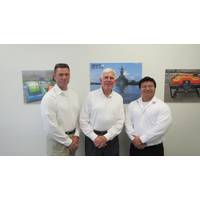
Deep Ocean Engineering
use survey boats and put divers at risk. These systems are easy to transport and can deploy quickly from a vessel of opportunity. This has, and will continue to be, DOE’s primary market. By world region, Asia, with its seemingly boundless infrastructure growth, presents oportunities What ONE technology has had the greatest impact on DOE’s ability to provided engineered solutions to the subsea market? Bergman: If I had to pick one technology, it would be computers, both embedded and PCs. Legacy Phantom ROVs were “hard-wired,” and, at the time, this was a strength.
Rope & Wires: At the Forefront of Technology
The Teufelberger Group’s global reach, research and development and 220 years of combined experience is helping to change the way the maritime industry looks at ‘rope.’ It hasn’t been too long since industry icon Tom Crowley, Jr. offered that the one technology that had the biggest impact on the safety and efficiency of [his company’s] maritime operations was, in a word: ROPE. The reasoning was simple. Today’s lighter, stronger synthetic strands have gone a long way in helping to reduce back and other related lifting injuries on deck. He stands by that answer today.

 December 2025
December 2025





